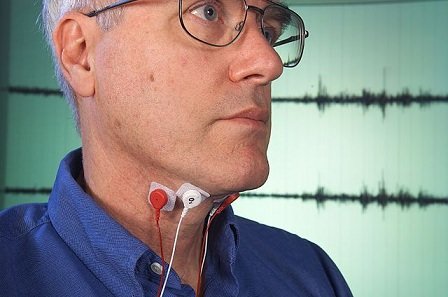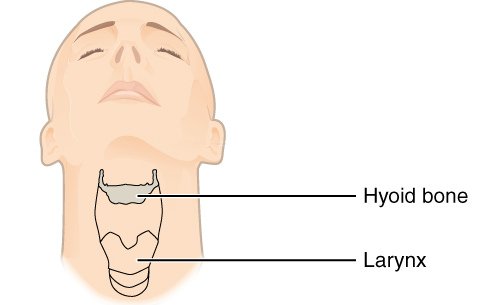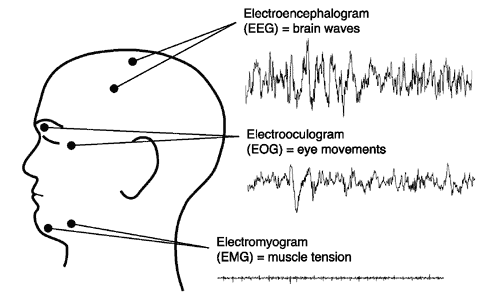Subvocal Recognition Technology (SVR) - An Alternative To Brain-To-Brain Interface (BBI)
Introduction
In my last science post, we took a look at the concept of Brain-to-Brain Interface (BBI) and its potentials to sideline the normal audio communication we've been used to. But looking at this holistically, how many of you would willingly choose the option of the invasive type of BBI that would require a surgical implantation of a chip inside your cranium? I also know that some would also go for the option of the non-invasive type, which would require an EEG headset to be worn on the head, but even at that, the thick mass of skull would attenuate the signals proceeding from the skull. But hey!! Another option has arisen - which is the subvocal recognition technology (SVR). Welcome to the potentials embedded in technology.
[Image Source: Wikimedia Commons. Author: Dominic Hart, NASA. Public Domain Licensed]
Just like I made mention of in the BBI post I talked about earlier, before the advent of technological whatnot, the mouth (that is the audible voice communication) was chief in the process of communication between humans, but just like we know, the human speech has some obvious limitations - first of all, tone can affect the meaning of words, also the accent, language barrier, and even the big one (the people who are buccally disabled - the dumb people), so all these have created a need for other options to emerge.
Secondly, there has been a consensus effort to interface the human body with machines in a process known as HMI (Human-Machine Interface), and in view of this, there are some factors to consider for the interfacing to be successful; which includes; an interfacing medium/device (like the EEG headgear we talked about in the BBI). But do we make use of the EEG headgear here? Obviously we do not, but you'll find out the tech that is used in lieu of the headgear shortly. But before then; and for the benefit of the uninitiated; I would give a brief overview of what subvocalization is.
Overview of subvocalization
I'm sure you've heard of the story of Helen Keller, who made history even in her blind and deaf state [ref]. Yes she was blind; so she wouldn't hear you speak, and she wouldn't also see your sign language even if you decide to make gestures at her, because she was also blind. So you see, the audible communication and the gesture recognition had already failed here. But with constant practice, she was able to detect what people said; but by what means? She would place her hand under the throat of the person speaking; with two fingers placed under the person's tongue and she could detect the vibrations made by the larynx as the person spoke, and these vibrations can be interpreted into words.
Well, that's exactly what subvocalization is - just like the brain waves differ from thoughts to thoughts (which enables the EEG headgear to pick up electrical impulses and distinctively detect the thought patterns) so also, for every speech, the vibrations of the larynx differ. So by inference; subvocalization is the silent vibration or the speech within, which is done when the muscles of the larynx vibrate in motion. But obviously, these vibrations cannot be seen with the eyes, they cannot also be heard with the ears, but something can be used to detect them. Just like the EEG detects brain waves, the EMG (Electromyography) device detects these vibrations as they are made by the larynx and transmits them in form of impulses. Again, the mouth has been sidelined.
[Image of The hyoid and Larynx. Source: Wikimedia Commons. Author: OpenStax College. CC BY 3.0 Licensed]
Mechanics of the subvocal recognition
Just like I mentioned above, the EMG device picks up subvocal vibrations, but how does this work? First of all, it is worthy to note that the first step in this is to link these EMG with a computer system, so as to convert the strings of electrical impulses detected into meaningful words, using some algorithms and software. The EMG device comes with electrodes which are usually placed at the base of the throat and other strategic positions in the maxillofacial region directly involved in enunciation. So even the tiniest humming sounds can be picked up and converted to strings of electrical impulses (which are called electromyograms).
But one may ask; after the interpretations of these impulses by the computer system, how do they get sent to the receiving individual? Otherwise it would just be a simplex communication (where you can only send signals but cannot receive signals), which does not fit into the definition of a discourse. I made mention of the Transcranial Magnetic Stimulation (TMS) device in my last post on BBI; well, it would also come in handy here (though some other option abide, but we will make do with this one).
The human brain; like we have been made to understand; is not only straight-jacketed to the production of signals, but can also be receptive to signals. And this is what the TMS device leverages upon. The TMS device generates strings and torrents of magnetic fields (as evidenced from the name - "Transcranial Magnetic Stimulation") over the head and the maxillofacial region, which can easily be transmitted into the brain as electrical impulses, and the brain would recognize and interpret them as what they are (so by summation; the pattern of movement is from the subvocal vibration to the computer system, to the TMS, and to the brain).
[Image Source: Pixabay. CC0 Licensed]
So by inference, if the TMS device is being incorporated here, then it would also be worthy to note that this concept has a little touch BCI (Brain-Computer Interface) in it, because the processed signals are received from the computer to the brain; though the signals are not generated from the brain but from the larynx. So this can also be called Subvocal Telepathy (hybrid between SVR and the BCI). Also, since "audible word" is not a medium here, the SVR devices would first use some specialized algorithms to match the patterns of subvocalizations of the particular individual overtime to increase accuracy and precision (in clear terms; matching pattern may differ from person to person).
Some may ask, what is even the need for this type of technology? Let me give you an instance; have you ever tried talking under water? For the Navy seals; for example; effective communication would be needed while they are under water, and since talking may not be too feasible, the SVR would really find its place here. After all, the mouth is not opening at all; just the skeletal muscles of the throat are moved. And good a thing, the TMS device that received signals can either be non-invasive or invasive; the choice is yours to make.
[Image Source: Wikimedia Commons. Public Domain Licensed]
Okay, also looking at the applications of SVR tech; thinking about covert communication or the transmission of classified information. The tech can also come in handy, since you're not uttering a word, you wouldn't be scared of someone eavesdropping into your convo. So privacy is the watch-word here. Another potential application is this: I'm sure you've heard of the possibilities of controlling machines with the thought - but here, we can control them with subvocalizations... what can't technology do? Maybe with further advances, we would not even have a need of using our mouths again. R.I.P mouth.
Conclusion
As technologies keep advancing, boundaries are crossed. Here, yet another boundary has been crossed in the field of communications, and the mouth is yet again about to be sidelined by the technology of Subvocal Recognition. Let's keep an open mind and watch as technology presents us with new possibilities.
Thanks for reading
References for further reading:
- Electromyograms: Detection and analysis
- How BCI works
- Concept of subvocalization: Ref1, and Ref2
- Concept of Transcranial Magnetic Stimulation
All images are CC Licensed and are linked to their sources
credit: @gtg






The world keeps evolving day by day with new technologies.
This is an educative write up. I just got to find what SRVR is all about
Yeah. The potentials embedded in technology are almost without limit; we're just the ones limited by our thoughts.
As long as we can think it out, then the actualization would be just a function of time
Congratulations @samminator! You have completed the following achievement on Steemit and have been rewarded with new badge(s) :
Click on the badge to view your Board of Honor.
If you no longer want to receive notifications, reply to this comment with the word
STOPTo support your work, I also upvoted your post!
Do not miss the last post from @steemitboard:
SteemitBoard and the Veterans on Steemit - The First Community Badge.
Hi @samminator!
Your post was upvoted by utopian.io in cooperation with steemstem - supporting knowledge, innovation and technological advancement on the Steem Blockchain.
Contribute to Open Source with utopian.io
Learn how to contribute on our website and join the new open source economy.
Want to chat? Join the Utopian Community on Discord https://discord.gg/h52nFrV
https://steemit.com/nuro/@rob24700/neuro-lace